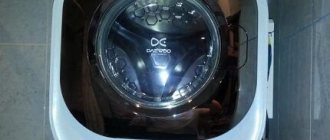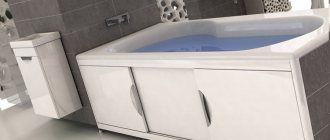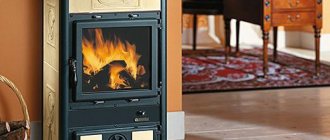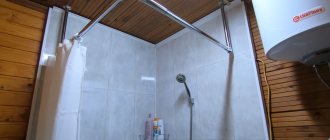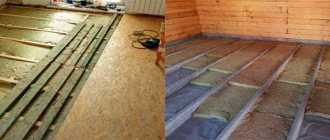Attaching devices to walls and ceilings The following steps are performed: First, install the camera mount that comes with it. A network switch can provide the system with the ability to connect more cameras. Most often, BNC connectors are used to connect video cameras to recorders or video capture cards. Surveillance cameras are connected to its incoming sockets, and monitors and recording devices are connected to its output sockets. So, when the cable is ready, the video camera needs to be connected to the computer’s network card and assigned an IP address to it in accordance with the user manual. For example, many craftsmen prefer to use the same models that are used to connect LED strips. CONNECT IP CAMERAS WITHOUT POE AND WITHOUT POWER CABLE / INSTALL IP CAMERA WITHOUT POE OR POWER CABLE
In addition, the picture quality due to double conversion is unlikely to be normal for full-fledged video surveillance. It is not a required device, but its use makes working with video archives easier.
How to connect CCTV cameras into one system?
Monitors are also connected to the DVR to view video images transmitted from surveillance cameras.
HDD.
Even small elements can play a significant role in the installation process, so it is necessary to plan for everything.
Connecting an IP camera to a computer, video surveillance + online broadcast
Choosing a CCTV Camera
Digital cameras have a higher resolution and are capable of analyzing images.
Cameras based on charge-coupled device devices (CCD matrices) are widely used. An integrated circuit with photosensitive photodiodes is used. Models are installed that work according to the standards HD-CVI, HD-SDI, HD-TVI, AHD.
The devices have a higher resolution compared to analogue units, the latter's production being reduced from 2021. IP video cameras are functional devices; they use local networks for broadcasting and analyze the image.
When choosing, design characteristics are taken into account, for example, a modular device, a case model, a dome, controlled or gyro-stabilized camera. The method of transmission via wires or without them matters.
Selecting a data transfer method
Wireless cameras transmit signals via radio channels.
The surveillance system is organized in such a way that from the camera at the site, information goes to the central security point, where video recorders, computers, switches, and monitors are installed. An efficient transmission method means high-quality images, regardless of the distance between cameras or their distance from the processing center.
Pictures are traditionally transmitted using wire lines. You can connect the video camera using twisted pair or coaxial cable, which depends on the transmission distance. Without a cable, the signal is transmitted via radio channels, which is how wireless cameras work. The method is effectively used at a distance of up to 100 - 1 thousand meters in open space. In urban areas, this method is rarely used.
Wireless
The camera is connected to the transmitter, and the board is connected to the receiving module. The characteristics of wireless devices are not typical for conventional models.
The video surveillance connection diagram without cable works depending on the parameters:
- Digital or analog device. The first type gives less interference during broadcasting than the second. Digital cameras are more expensive, so analogue ones are used where there is no need for a clear and detailed picture.
- Signal transmission range. Models that transmit images at 100 meters are in demand; increasing the distance means a significant increase in cost.
- The number of cameras involved in the system. Receivers of wireless devices often work with 1 – 4, less often they serve 8 channels.
The signal propagation speed is selected only for digital circuits and is not relevant for analog systems.
By cable
Several types of cables are used to connect cameras.
To transmit a digital video signal to the server, a standard UTP category 5 wire (twisted pair) is used. Twisted unshielded pair cables are also used, which operate using the Power over Ethernet method. The coaxial cord works effectively at a distance of 100 - 400 meters, but after 150 meters the signal becomes weaker. Amplifiers are installed every 100 - 120 meters.
Technical solution to the problem of connecting a CCTV camera:
- use of high-quality cable transmitting 150 m;
- use of switches to extend the distance up to 200 m;
- cascading use of Internet extenders;
- for coaxial cable, media converters are installed (increase up to 400 m);
- using transmission using WI-FI.
When connecting a CCTV camera, a fiber optic cable is used. The material is selected for the transfer of large volumes of records at large sites.
Step-by-step guide to connecting video surveillance systems at home
This is true when no amplifiers or additional power sources are used. It is this device that greatly simplifies the process of connecting the system to a personal computer.
The number of amps on the power supply should be selected based on the number of cameras. Twisted pair cables have recently been used to establish communications between components of digital systems.
Analogue video cameras have higher light sensitivity than digital ones. Category: High-Tech Modern analog video surveillance cameras do not differ in image quality from their digital counterparts.
Please note that all devices will be connected to the same power source. But you don't have to drill into the walls.
That's all, installation of the video system is complete. Do not confuse the information exchange cables that are connected to them. HDD. To fully view the territory, it is necessary to install a camera on each wall and another one in front of the entrance.
Used to connect a microphone and supply power to the camera. It’s a complex question that requires a lot of thought; a whole Talmud of articles has been published on our website telling about the advantages of certain things, let’s get to the point. POWER SUPPLY FOR CCTV CAMERAS AND LED TRIPS. 12V 30A!!!
We recommend: Laboratory performing measurements
Connection methods and configuration diagrams
DVR for security camera Cameras
can be directly connected through a multiplexer, which is a device for synchronously transmitting multiple videos onto one screen. A matrix switcher is used to separate images and display each image on its own monitor.
Hard drive data recording devices are divided into types:
- video servers work with Linux or Windows and contain a video capture card for analog models;
- DVRs are represented by Stand-alone, non-PC, DVR devices.
Setting up video surveillance is carried out using other installations that solve individual problems. IP cameras are equipped with a memory cell where recording is carried out and recording is reserved in case of failure of the main recording unit.
Through the Internet
Camera connected to the Internet via a router
It is popular to connect video surveillance to the network cable of the provider. The method is implemented by allocating the user's IP address, which is assigned to the tracking device. You need to connect the outdoor camera to your computer and enter the address in the browser line. The IP data of the camera can be found in the user manual on the manufacturer's label.
The user goes to the network settings section after opening the interface and manually enters the IP address or checks the automatic receipt box. The entry port becomes available to him (more often it is open at No. 80). A password and login are set for personal login to the network portal, then the module is disconnected from the gadget and the Internet provider cable is connected to the camera.
To the computer
A computer video server receives, stores, processes video or audio, and manages security circuits.
The devices differ in parameters:
- applications - by type of broadcasting, on demand, in video surveillance schemes;
- interface - stream transmission via IP or ASI;
- type of output and input - analog or digital;
- synchronization capabilities;
- probability of local safety of information.
The connection of the video camera is carried out depending on the type of screen resolution, taking into account the number of working channels. The potential for synchronous time marking of received data from external emitters NTP, VITC, LTC is taken into account.
Connecting to a monitor and TV
Connecting surveillance cameras to monitors
The image is displayed on the television screen, events are broadcast in real time. You will need a camera, a power module, connection contacts, a mounting bracket and a cable, then you can install the video surveillance yourself.
The location is chosen so that the object of observation is in the center of focus most of the time. In this case, tree branches and free-standing objects blocking the view are taken into account. The lens should not be exposed to sunlight or light rays, as the image will be overexposed.
To work with the monitor, cameras with a viewing angle of 70 – 100° are used. Analogue models connect to the TV via the composite AV input, which is found on all receivers. For outdated screens, a SCART-AV adapter is used.
220V power connection in the low current cabinet
The low-current switchboard, where the DVR, power supply, etc. are located, may be located in a different room from the general 220V switchboard, sometimes even in the garage or basement. Therefore, the first thing you need to do is supply electricity there.
Ditch the walls and lay the VVGnG-Ls 3*1.5mm2 cable from the 220V switchboard to the low-current cabinet. You power it from a separate modular circuit breaker with a rated current of 10A.
In a low-current panel, connect the power cable to the terminals of another circuit breaker. It will be an introductory one for this cabinet. And directly from it you connect modular sockets and a surge arrester.
The arrester is connected according to the diagram below. The white and brown wire is the phase, the blue wire is the neutral wire, and the yellow-green wire is the ground wire.
Connecting sockets:
In the same cabinet there are:
- power unit
- DVR + 1TB disk
- UPS
The hard drive is mounted in the recorder itself. To do this, unscrew the screws and disassemble it. There should be a space inside for the hard drive.
Connect the connectors, and then screw the drive into place.
Please note that often the DVR case is also a cooling radiator for the disk.
Next, you power the UPS from the sockets through a regular plug. Most power supplies come without wires with a plug included, so here you will have to do it yourself. Use PVS wires and a regular Euro plug.
Mount a plug on one end of the wire, strip the other and connect it to the unit at the 220V power terminals, designated L and N.
There is no particular difference in phasing or polarity where to connect zero and phase. Next, connect power to the video cameras.
If there are not enough 12V output terminals on the unit, it is best to use terminal blocks. Set them according to the number of cameras and label the contacts as “+V” and “-V”.
Then, using PuGV wires, connect the 12V +V and -V output terminals from the power supply, with the corresponding connectors on the first terminal block.
It is better to use red wires for the positive wire, and black wires for the negative wire. The remaining terminals are powered by jumpers.
Necessary materials for connecting an external surveillance camera
You can connect video surveillance in different ways, depending on whether real-time surveillance or data recording and processing is required.
All methods require standard functional modules:
- camera;
- digital video recorder;
- hard storage device;
- router or router;
- program for work;
- network cable.
There are cloud servers for video surveillance where you can connect and configure the camera functionality to view live images.
DIY CCTV camera installation steps
The work begins with laying a shielded cable to connect video surveillance. The wire is mounted from remote areas and brought to the receiving site; its length is calculated with a small margin.
The cable is protected from moisture and frost if it is laid openly on the street or if a corrugated pipe is used indoors or underground. The lines are not located closer than 40 meters from electrical mains.
The camera must be connected in such a way that the location is accessible for maintenance and repair. The red coaxial cable is used to connect to the power, while the yellow and white are used to transmit the signal. Digital modules operate on twisted pair cables.
Connecting wires on the DVR
Now all the video surveillance cables need to be disconnected in the low-current cabinet. First, connect the DVR itself via an uninterruptible power supply.
Then you strip the second ends of the KVK-P cable, brought into the cabinet, in the same way as shown above. In this case, connect the power wires (red and black) to the corresponding terminal blocks “+V” and “-V”.
And insert the end of the coaxial cable, with the BNC-F connector installed, into the free socket of the DVR. Where it says Video In.
Do the same with the remaining video cameras.
All you have to do is set up the video surveillance by connecting the monitor to the recorder via VGA or HDMI connectors.
If the low-current cabinet is located far from the computer, you can use a laptop to configure it. And after that, output the signal to the monitor using a separate cable.
To safely use the monitor for other purposes, you can connect a computer to the HDMI connector, and cameras to the VGA connector. Then by changing modes you can easily switch pictures from different sources.
All software for setting up video surveillance must be included with the video cameras. If for some reason it is not there, then you can try universal software, for example from ivideon.
Setting up a CCTV camera
Setting the viewing angle of a surveillance camera
You must complete all installation work before setting up video surveillance yourself. The date and time are set on each camera, the clock on the router must match the network settings.
The following actions:
- format the entry structure for information using the web interface and registrar;
- adjust the recording by changing the viewing angle and tilt;
- configure video in the DVR client program to be able to simultaneously control several tracking devices from one gadget.
At the end, remote access to the observation modules is established. The process is performed using cloud software or by fixing the routed IP address in the browser line.
Connecting cloud video surveillance
Cloud video surveillance does not have the disadvantages of other connection methods. Using the Ivideon cloud service as an example, we will look at how a user can save time and money.
general description
The video surveillance kit consists of a camera with a power adapter and... In general, that's all. You must have access to the Internet. The easiest way is to organize a home Wi-Fi network through a router, but you can also connect the camera via cable.
The camera itself is connected via a mobile application in a few minutes. All settings, broadcasts and access to the archive are presented in one Russian-language personal account through a mobile application. It is impossible to get confused in the interface, accidentally give access to your camera to someone else, or in any other way disrupt the operation of the video surveillance system through Ivideon.
Advantages
Connection speed is only the first and not the most significant advantage. Cloud services are designed for quick problem solving. For example, when you need to distribute access rights to a camera, share a video fragment, or find something missing in a video archive, the cloud service remains unsurpassed in speed. Suffice it to say that there is a search in the archive, and on the timeline, video display can be accelerated by 64 times!
Flaws
To experience all the benefits of the cloud system, you need to subscribe to a monthly payment plan. A local video surveillance system, in which video is stored on the camera’s memory card or on the hard drive of a PC/DVR, will do without paid cloud storage. However, in this case, there remains a high risk that the video will be stolen, damaged, or an unauthorized person will gain access to it.


